店屋
店屋(英語:),香港稱為下舖上居(英語意譯:living above store),台灣則常稱為街屋(英語:)[1] [2],是常見於華南地區及東南亞的風土建築,多為兩至三層高,一樓作店舖使用,二三樓為民居[3][4]。店舖前設有騎樓,此設計有利通風及避雨[5]。

一種店屋的原型
東南亞不少店屋,礙於稅務及結構規限,都為窄長設計,當地的騎樓因為法例規定為5英尺(1.5)闊,名為五腳基。
参考文献
引用
- . service.wordpedia.com. [2020-07-21]. (原始内容存档于2019-04-22).
- . 財團法人空間母語文化藝術基金會. [2023-03-21]. (原始内容存档于2023-03-21) (中文(臺灣)).
- Zhu, Jieming, Sim, Loo-Lee, Liu, Xuan, D., Place-Remaking under Property Rights Regimes: A Case Study of Niucheshui, Singapore (页面存档备份,存于), IURD Working Paper Series, Institute of Urban and Regional Development, UC Berkeley, 2006, p.13. Accessed 2012-3-30.
- Chua, Beng Huat, and Edwards, Norman, Public space: design, use, and management (页面存档备份,存于), National University of Singapore, Centre for Advanced Studies, Singapore University Press, 1992, p. 4-5. ISBN 9971-69-164-7
- Lim, Jon S.H., "The Shophouse Rafflesia: An Outline of its Malaysian Pedigree and its Subsequent Diffusion in Asia", Journal of the Royal Asiatic Society, Volume LXVI Part 1, 1993, pp 47-66. ISSN 0126-7353
来源
- Lee Ho Yin, "The Singapore Shophouse: An Anglo-Chinese Urban Vernacular," in Asia's Old Dwellings: Tradition, Resilience, and Change, ed. Ronald G. Knapp (New York: Oxford University Press), 2003, 115-134.
- Davis, Howard, Living Over the Store: Architecture and Local Urban Life, Routledge, 2012. ISBN 978-0415783170
- Chua Beng Huat (Chua, B.H.), The Golden Shoe: Building Singapore's Financial District. Singapore: Urban Redevelopment Authority, 1989.
- Lee Kip Lim. The Singapore House, 1849-1942. Singapore: Times, 1988.
- Goh, Robbie, Yeoh, Brenda, International Conference on the City, Theorizing The Southeast Asian City As Text: Urban Landscapes, Cultural Documents, And Interpretative Experiences, World Scientific Pub Co Inc., 2003. ISBN 978-9812382832
- Yeoh, Brenda, Contesting Space: Power Relationships and the Urban Built Environment in Colonial Singapore (South-East Asian Social Science Monographs), Oxford University Press, USA, 1996. ISBN 978-9676530851; and published by the Singapore University Press, 2003. ISBN 978-9971692681
- Ongsavangchai Nawit, Funo Shuji, Spatial Formation And Transformation of Shophouse in the Old Chinese Quarter of Patani, Thailand, Journal of Architecture and Planning, Transactions of AIJ, V.598, pp. 1-9, 2005. ISSN 1340-4210
- Ongsavangchai Nawit, Formation and Transformation of Shophouses in Khlong Suan Market Town, Proceedings, Architectural Institute of Korea, 2006.
- Phuong, D. Q. and Groves, D., Sense of Place in Hanoi's Shop-House: The Influences of Local Belief on Interior Architecture, Journal of Interior Design, 36: 1–20, 2010. doi: 10.1111/j.1939-1668.2010.01045.x
- Chang, TC and Teo, P, The shophouse hotel: vernacular heritage in a creative city, Urban Studies 46(2), 2009, 341–367.
This article is issued from Wikipedia. The text is licensed under Creative Commons - Attribution - Sharealike. Additional terms may apply for the media files.



















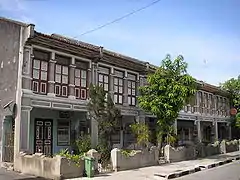

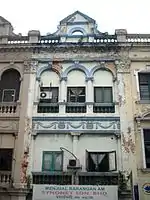
%252C_central_Kuala_Lumpur.jpg.webp)
%252C_central_Kuala_Lumpur.jpg.webp)










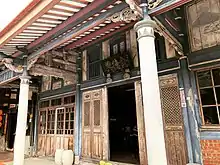

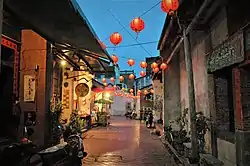

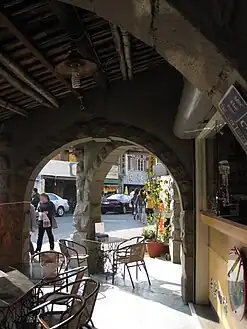



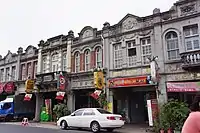
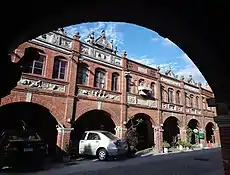









.jpg.webp)
.jpg.webp)
.jpg.webp)












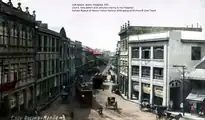
.jpg.webp)